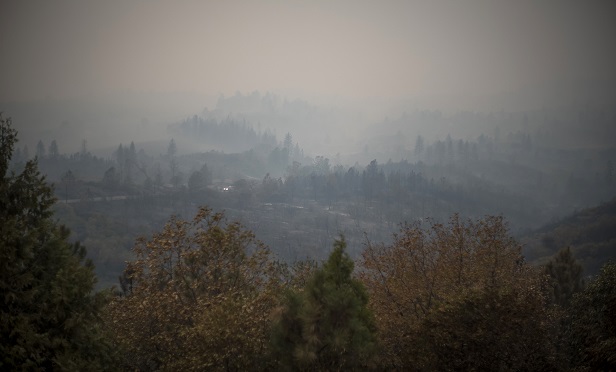
 Smoke from the fire that consumed Paradise, California, has hurt the air quality in San Francisco, where the NAIC is holding its fall national meeting this week. (Photo: David Paul Morris/Bloomberg)
Smoke from the fire that consumed Paradise, California, has hurt the air quality in San Francisco, where the NAIC is holding its fall national meeting this week. (Photo: David Paul Morris/Bloomberg)
Hundreds of state insurance commissioners, aides, lobbyists and consumer group representatives have gathered in San Francisco this week for the fall national meeting of the National Association of Insurance Commissioners.
The agenda for the NAIC's life insurance, annuity and health insurance seems lighter than usual, with a lot more focus on approving consumer guides and discussing long-running products than on approving major new models.
One reason may be that commissioners knew going into the meeting that conditions were changing.
Traditionally, the United States has left regulation of the business of insurance to the states. The NAIC is a Kansas City, Missouri-based group for insurance regulators, not a government agency. It cannot normally change state insurance laws, regulations or procedures directly. But states often use NAIC models when developing their own laws and regulations, and, in many cases, they adopt some types of NAIC changes, such as changes to financial reporting forms, automatically.
Here are five external factors hanging over the NAIC this week.
1. Camp Fire
San Francisco is just 180 miles away from California's devastating Camp Fire, in Butte County, California. The fire has killed 56 people, caused the evacuation of 52,000 people and destroyed about 9,000 structures, and the fire is still just 40% contained, according to the California Department of Forestry and Fire Protection.
The smoke and soot from the fire have caused the official air quality index to rise to 235, which is three times the typical index level in Beijing and is classified as "very unhealthy."
The NAIC itself issued a travel advisory to would-be meeting attendees.
"As attendees travel to San Francisco for the National Meeting, the NAIC advises the Bay Area is impacted by smoke from the Butte County fire," the NAIC said in the advisory. "Please check resources below for air quality status and health advisories. All travelers should check with airlines for delays."
Whatever attendees are saying in official proceedings about life insurance, annuities and health insurance, their minds may well be on the need to prevent and cope with catastrophic natural disasters.
2. State Elections
The Nov. 6 general elections gave Democrats control over the U.S. House.
The elections also had a big effect on the balance of power at the state level.
Before the election, Republicans controlled the state House, the state Senate and the governorship in 26 states.Democrats had complete control in seven states. Control was split in a bipartisan way in 17 states.
Three of the top four NAIC offices — the presidency, the vice presidency and the president-elect post — were held by states with complete Republican control.
Ballots are still being counted in some states, but it appears that Republicans now have complete control in 21 states, Democrats have complete control in 14 states, and the parties split control in 13 states.



